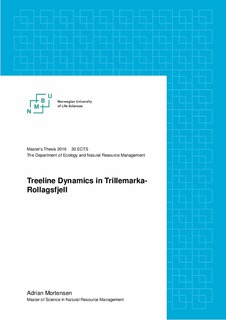| dc.description.abstract | The environmental effects that determine the altitude of the tree line have been discussed for a long time. Alpine ecosystems are known to be particularly sensitive to climate warming, and both biotic interactions as well as abiotic factors, such as temperature and precipitation, are important shapers of plant alpine communities.
Identifying the rate of response of the alpine tree line to changes in climate is crucial for understanding and predicting the future of alpine species as the world gets warmer. This study took place in the nature reserve of Trillemarka-Rollagsfjell, located in Buskerud County, south-eastern Norway. The goal was to see if there was an observable correlation between both summer temperature and precipitation, and the recruitment and growth of Norway spruce (Picea abies), Scots pine (Pinus sylvestris) and birch (Betula pubescens) above the timberline in south-eastern Norway.
Both climatic data and physical samples were collected. The samples were all collected from two areas, between late July and early September 2015. For each area, ten different plots of 10x10 meters were established and sampled. The climate data was gathered from the Norwegian Meteorological Institute. The results showed no clear correlation, but depicted a large local variance in annual growth and recruitment, both for each site and in-between the species. In addition, an increase both in yearly growth and recruitment seemed to be evident, which could indicate that an increase in tree line altitude is happening.
The results appear to underline the importance of microhabitat and small-scale disturbances, such as grazing and snow-cover, in regard to individual establishment success and growth rate. As it stands, the results show that neither temperature nor precipitation alone are the most limiting for the trees in the tree line ecotone in Trillemarka-Rollagsfjell. | nb_NO |

